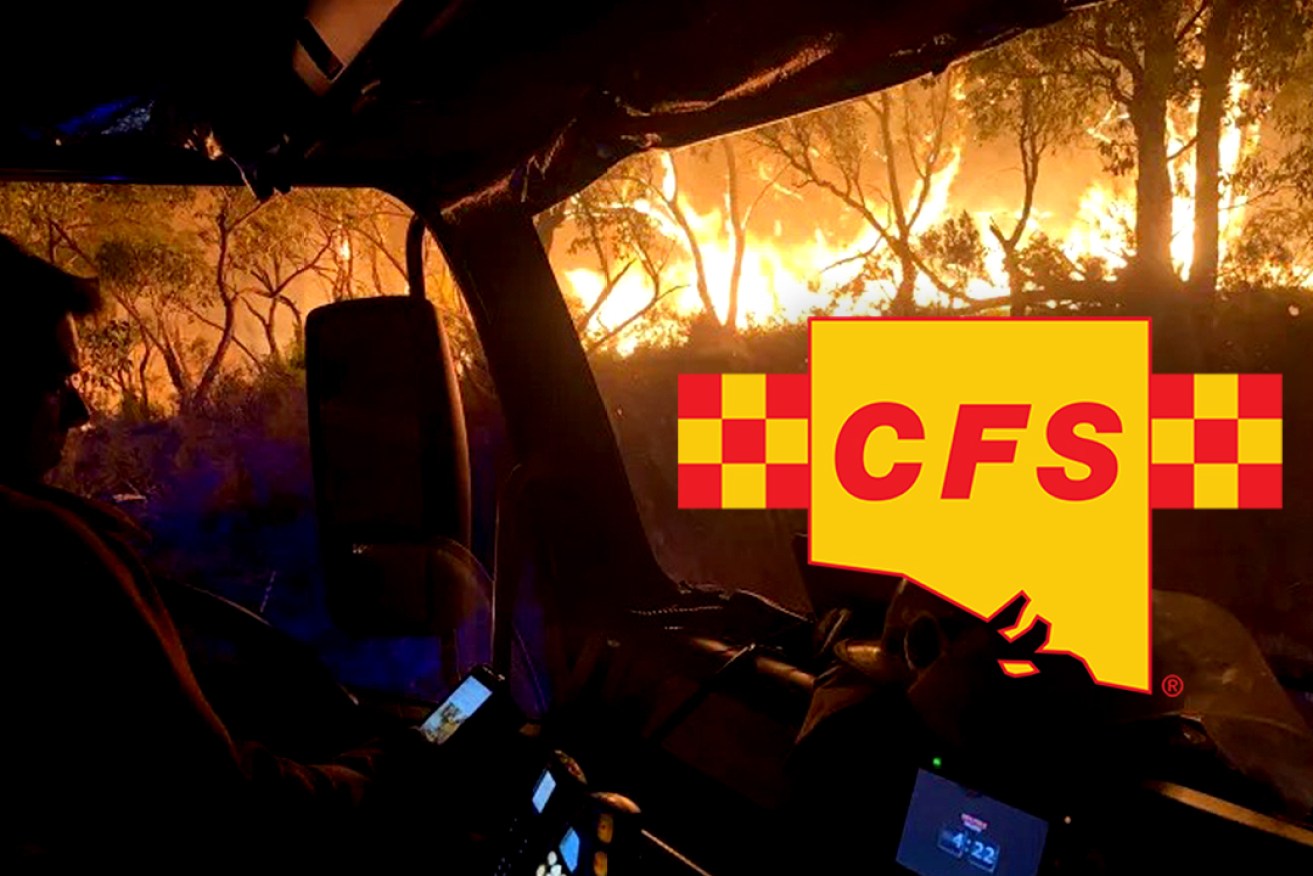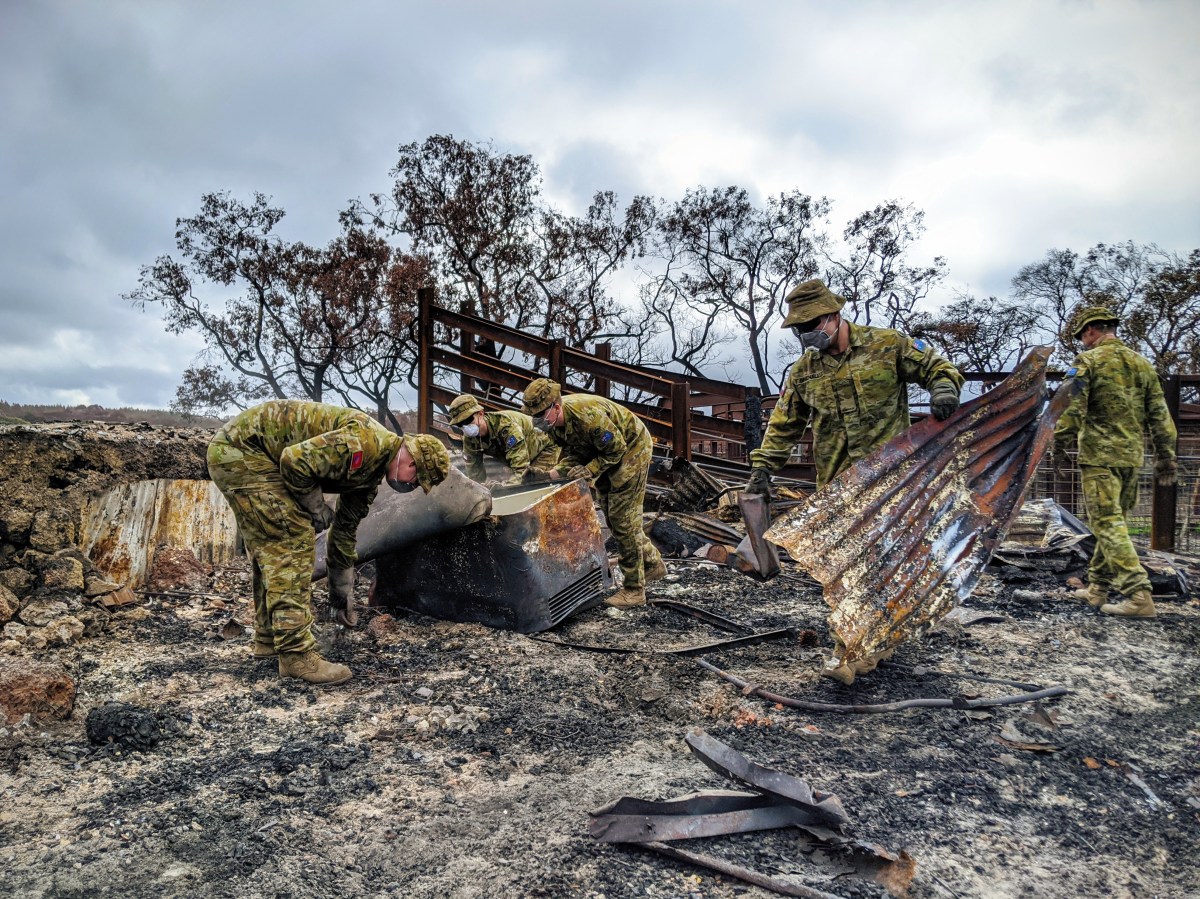CFS sounds alarm on climate change, disaster response
The SA Country Fire Service has warned that without a resources boost it will need Australian Defence Force support “much quicker” in future natural disasters, amid concern about the impact of climate change on future disaster planning.


Photo: Basket Range CFS volunteer Andrew Noble
In a submission to the federal Senate Select Committee on Australia’s Disaster Resilience, the CFS said South Australia’s changing climate and “increasing exposure to natural hazards” is placing “higher levels of expectation on SACFS to protect communities and manage major emergencies and disasters”.
The CFS, which has around 190 full time equivalent staff and approximately 13,500 volunteers, said climate change has “seen the need for emergency services to plan for larger and more frequent natural disasters that are not limited by borders”.
“Increased capacity and capability is needed for fire and emergency services to cope with worsening disasters and empower communities to remain resilient in the event of natural disasters,” the CFS said in its submission last month.
“An increase in full-time staff to manage longer more frequent incidents and volunteers will enable fire and emergency services not only build capacity and capability to deal with more intense natural disasters but will also establish a standing capability to initiate and manage the transition to disaster recovery efforts.
“Without building this capability, fire and emergency services will be looking to have ADF (Australian Defence Force) support fires and major disasters much quicker than the current activation timeframes as an alternate to state-based solutions.
“At the least, any rapid activation of the ADF will require planning to occur in real time rather than a number of days.”
According to the submission, the CFS has responded to eight “level three” incidents in the past 10 years. A level three incident is the highest-level declaration and requires the intervention of “highly trained and skilled incident management teams”.
The CFS said it has responded to four level three incidents in the past three fire seasons.
“If the SACFS is to meet these increasing expectations with finite resources the role of ADF providing logistical support in Level 3 incidents will enable a professional and efficient emergency response through the use of the unique skill sets of each of the organisations,” the CFS said.

ADF personnel clearing remains of a shearing shed on Kangaroo Island in Feburary 2020. The ADF undertook more than 1500 bushfire assistance tasks across the country during the 2019-20 Black Summer fires. Photo: EPA/Defence Deparment handout
But the Department of Defence says the ADF’s capacity to provide disaster assistance is already stretched and “unsustainable”.
Since 2019, more than 35,100 ADF personnel have been called out to national disasters, more than half of the force’s 62,000 members, according to Defence.
The Defence Department submitted to the committee that its commitment had created workforce pressures on its permanent and reserve capacity.
“While the ADF is proactively postured to support the response to domestic disaster relief, the unprecedented scale, duration and frequency of support is unsustainable without accepting significant impacts to ADF preparedness for its primary defence of Australia role,” the Defence Department submitted.
“The enduring requirement for Defence in responding to more frequent and intense domestic natural disasters impacts its capacity to conduct specific training, exercises or deployments.”
During the 2019-20 Black Summer bushfires, the ADF deployed 8236 members, including 2556 reservists, to provide support across South Australia, New South Wales, Queensland, Victoria the ACT, and Tasmania.
The total cost of the ADF’s Black Summer operations was $68.6 million, according to the subsequent Royal Commission into Australia’s disaster response.
The CFS said the ADF was “ideally positioned” to provide logistical support, such as accommodation, catering, transport and evacuations, but this level of support would be “likely limited to major events”.
It also warned that ADF personnel should not be involved in fighting fires.
“SACFS welcomes the ADF being involved in events such as the 2019- 2020 bushfires, however knowing ADF resources are finite, more can be done to define the role and extent of the ADF involvement,” the CFS said.
“The provision of logistical support by the ADF will always be welcome by the SACFS, but becoming involved directly on the fireground is not supported without the appropriate skillset, as it will only put ADF personnel and SACFS firefighters at risk.
“It would also create a perception the ADF was duplicating or taking over the role of that of the SACFS volunteers, which would be received poorly by the public and would further compound efforts to attract and retain firefighting volunteers.”
A major review of the CFS’s response to the 2019-20 Kangaroo Island bushfires found the fire service suffered from a “significant deficiency” in resources.
Former CFS chief officer Mark Jones admitted following the release of the review in 2021 that the CFS “was not resourced to cope with two large campaign fires running concurrently in Kangaroo Island and Cudlee Creek”.
The 2019-20 Kangaroo Island fires burnt 211,474 hectares of land and resulted in two deaths, 87 homes destroyed and 59,730 livestock lost.
The disaster affected nearly half of the island’s land mass and accounted for around 75 per cent of all hectares burnt in South Australia during the Black Summer fire season.
The Cudlee Creek blaze tore through nearly 25,000 hectares of land within a 127-kilometre perimeter in the Adelaide Hills – resulting in one death and the destruction of nearly 100 homes.
It was revealed in November 2022 that mental health services in the Adelaide Hills and Kangaroo Island are still dealing with a “significant increase” in referrals after the 2019-20 fires.
The CFS warned in its submission of the need for more involvement in community mental health to build resilience.
“The increased impact expected in the future will critically require greater local involvement in building resilience, social connectivity and even contributing to the value of mental health in the community through long lasting community connections.
“Too often a community will feel let down when left to ‘pick up the pieces’ or parts of the community are supported to get back on their feet, with others not as deployments of external bodies cease.”
InDaily asked Emergency Services Minister Joe Szakacs whether he agreed with the CFS’s statement regarding the need for greater resourcing. In response, Szakacs said in a statement: “With ongoing climate change, emergencies are growing larger in scale and becoming more frequent.”
“The State Government is working with our agencies to shift the changing landscape through operational demands and technology advancements,” he said.
“A key example of new technology is Automated Vehicle Locators (AVL), that help with deployment strategy to make more timely and critical operational decisions. Separately, South Australian-led innovation is found in the primary response zone aerial deployment activation, that will deploy aerial support automatically after a fire.
“Investment will significantly increase into the future with co-investment between the Commonwealth and State Government through the $1B Disaster Ready Fund.”
-With AAP




